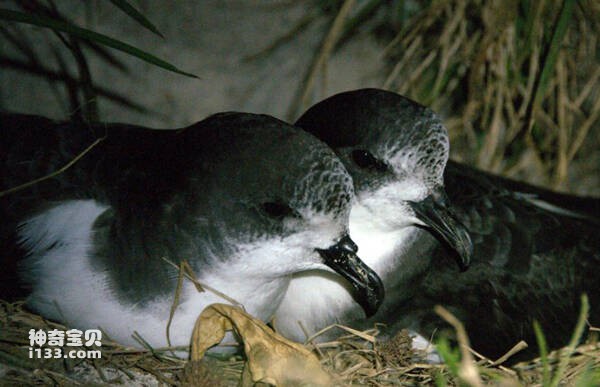Pterodroma hypoleuca
IUCN
LCBasic Information
Scientific classification
- name:Pterodroma hypoleuca
- Scientific Name:Pterodroma hypoleuca,Bonin Petrel
- Outline:Waterfowl
- Family:
Vital signs
- length:30-33CM
- Weight:182g or so
- lifetime:No textual research information is available
Feature
The forehead is white, the crown to the back neck is black, the rest of the upper body is gray, and the tail feathers end is black
Distribution and Habitat
Country of origin: China, Japan, Marshall Islands, Northern Mariana Islands, Philippines, Russian Federation (Eastern Asia), United States (Hawaii Island).
Source Uncertain: South Korea, Micronesia, small islands off the mainland United States.
During the non-breeding season, it roams the North Pacific, passing the coast of Taiwan, the Ryukyu Islands, the Izu Islands, and north to Sakhalin Island.
The Shearwater is a typical Marine bird, living in temperate seas, living on and near coasts and coastal islands during breeding, and living entirely at sea during non-breeding periods.
Appearance
The petrel is 30-33 cm long, has a wingspan of 63-71 cm, and weighs 182 grams. It is a medium-sized seabird. Short mouth and neck; Long wing tips; Round tail; The body is fusiform; The frontal base is white from the eye to the throat, white spots on the forehead, black from the top of the head to the back of the neck; Back, shoulders, waist and tail covered with feather rat gray; The tail is also mouse gray, but with a wide black end spot; The black posterior neck extends down to the side of the neck, forming a neck ring with the throat disconnected; The white of the lower body extends from the throat to the back, forming a clear black and white dividing line through the eyes to the forehead; The wings are black, the overlying wings and the secondary flying feathers are mixed with gray, so that an insignificant "M" shaped spot is formed on the wings; The wings are white under the wings, the tip of the feathers is black, forming a black outer edge, and two thick black lines ru
Details
Its scientific name is Pterodroma hypoleuca, and its foreign name is Bonin Petrel.

The petrel is active in groups on the ocean, and is active during the day and night, except at night during breeding. Good at flying, can fly with wings, and can tilt left and right, and glide back and forth over the ocean for a long time. It can also fall sharply straight through the air. Don't usually follow boats. It mainly feeds on small Marine animals such as small fish, shrimp, mollusks and crustaceans.

The shearwater breeds on islands in temperate seas, nesting in groups and breeding from October to April. They usually arrive at the breeding grounds at night and are paired by the time they arrive. Nest in the interior of the palm forest, but also on the edge of the forest and under exposed seashore boulders. The nest is usually placed in rock piles or rock holes and crevices, but also in the hole of a tree or directly in the ground for the nest. The nest is very simple, with only a few dead leaves and grass in the nest. They usually come to the breeding island in pairs at dusk, flying fairly high and chasing each other over high palm forests. They can fly through the trees in the forest by flapping their wings and leaving the forest into the air through the gaps between the tree crowns, as well as climbing up the tree trunks and leaving the ground. Access to the nest site is usually through the gap between the trees straight down. Start repairing the old nest or building a new nest as soon as you arrive at the nest site. Eggs are laid in late November or early December, 1 egg per litter, white, 47-50.1 mm x 36.5-37.1 mm, with an average of 50 mm x 37 mm. The chicks hatch in January, and in April they can fly away from the nest.

Listed on the International Union for Conservation of Nature Red List of Threatened Species (IUCN) 2018 ver 3.1 - Not Threatened (LC).
Protect wild animals and eliminate wild meat.
Maintaining ecological balance is everyone's responsibility!








